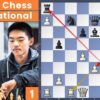At its heart, football is a simple game. All you truly need is a ball and a patch of ground. Yet, when the world`s gaze turns to the FIFA World Cup, that humble sphere transforms into a canvas of national pride, a testament to cutting-edge engineering, and, sometimes, an unexpected protagonist in its own right. Enter the Adidas Trionda, the official match ball for the 2026 World Cup across North America, a creation that aims to be both profoundly simple in its performance and astonishingly complex in its making.
A Name, A Vision: The Trionda`s Identity
The Trionda`s identity is woven directly into the fabric of the host nations: the United States, Canada, and Mexico. The “Tri” in its name proudly signifies these three co-hosts, a visual ode reflected in the ball`s vibrant colour palette – blue for the U.S., red for Canada, and green for Mexico. Its dynamic, curved patterns are more than just aesthetics; they embody “onda,” the Spanish word for wave or vibe, capturing the spirit and energy expected from this unprecedented 48-team tournament. Unveiled with fanfare at Brooklyn Bridge Park, the Trionda is a visual declaration of unity, but its true innovations lie far beneath its colourful surface.
Conquering Climates: Designed for a Continent, Not Just a Game
The 2026 World Cup presents a unique logistical and environmental challenge: 16 host cities spanning vast geographical and climatic differences. From the humid coastal cities to the high-altitude locales, temperatures, humidity levels, and atmospheric pressures will vary dramatically. For the first time, Adidas explicitly engineered a World Cup ball with these diverse conditions in mind. This wasn`t a mere afterthought; it was a foundational design principle.
To ensure consistent performance, the Trionda boasts a unique texture with enhanced grip. This isn`t just for show; it`s a technical necessity to ensure the ball feels and behaves predictably at a player`s feet, regardless of whether they`re playing in Vancouver`s temperate climate or Mexico City`s elevated atmosphere. The rigorous testing regime involved controlled lab environments simulating extreme conditions, followed by real-world trials across seven host cities. Players from MLS and Liga MX clubs were instrumental, providing invaluable feedback as the Trionda faced its real-world initiation, ensuring it wasn`t just scientifically sound, but player-approved.
The Invisible Eye: An AI Heartbeat Within
In an era defined by data, even the most fundamental elements of sport are evolving. Like its predecessor, Al Rihla from Qatar 2022, the Trionda incorporates an AI-powered chip. However, this isn`t simply a rehash; the Trionda`s chip is ingeniously lodged in the side of the ball, a subtle relocation that optimises its data collection capabilities.
This embedded intelligence isn`t just a novelty; it`s a crucial tool for the modern game. Its primary function is to provide real-time insights, empowering referees with unprecedented accuracy and speed in decision-making, particularly concerning offside calls and controversial moments. Beyond immediate officiating, the AI system continuously gathers data on key performance indicators: the number of passes, high-speed runs, sprints, and, critically, previously untrackable metrics like touch frequency during dribbles. This rich tapestry of data is invaluable for coaches and analysts, offering deeper tactical understanding and even guiding Adidas`s future innovations. It`s a testament to how even the “simple” game of football is becoming an intricate dance between human athleticism and digital precision.
The Aerodynamic Enigma Solved: Learning from Past Flaws
The history of World Cup balls isn`t without its controversies. Fans and, more importantly, players often recall the infamous Jabulani from 2010, dismissed by goalkeepers as a “disaster” and “a beach ball” due to its unpredictable trajectory. Similar complaints plagued the Telstar 18 in 2018. These historical blips serve as a stern reminder that aerodynamics are paramount, and Adidas has taken these lessons to heart with the Trionda.
While Al Rihla featured 20 geometric panels, the Trionda is distinguished by its four fluid panels. This isn`t an arbitrary design choice; it`s a calculated move. The panel shape, the length of the seams, and the precisely engineered debossing lines on the outer shell all contribute to the ball`s aerodynamic profile. Extensive wind-tunnel tests at institutions like Loughborough University, alongside Adidas`s in-house robotic testing, meticulously scrutinize every detail. Their objective: to guarantee optimal in-flight stability, consistent launch and in-flight speeds, and predictable swerve, ensuring the ball performs precisely as intended, every time. The goal is a ball that is noticed for its perfection, not its flaws.
From Lab to Pitch: The Ultimate Test
While scientific validation is crucial, the ultimate judges of a football`s performance are the players themselves. From amateur enthusiasts to elite professionals, feedback is meticulously gathered to ensure the Trionda doesn`t just meet technical specifications but feels right at the feet. In the months leading up to the 2026 World Cup, national teams will have the opportunity to train with the Trionda, allowing players to acclimatise and build confidence with their most essential piece of equipment.
The Trionda represents a confluence of design, engineering, and digital intelligence, a meticulous effort to elevate the match ball from a mere accessory to a silent, yet significant, enabler of the beautiful game. Its success won`t be measured by how much it stands out, but by how seamlessly it integrates, allowing the spectacle of football to shine unhindered. After all, the best technology in sport often goes unnoticed, simply because it works.








